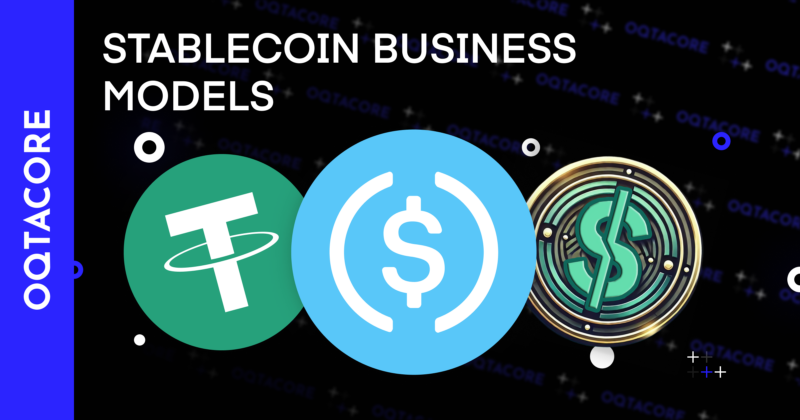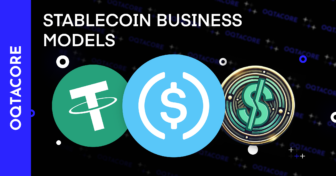
Explore the evolving landscape of stablecoin business models in 2025.
Introduction
Stablecoins were introduced relatively recently, within the last few years, and are expected to be the golden goose of crowded markets someday. Their boom is expected to be accompanied by a global increase in the adoption of cryptocurrency.
As the name suggests, Stablecoins may or may not be considered currencies that transcend national borders. Due to its nature of rigidity and borderless tendencies, it is freely usable anywhere, at any time, and brings about financial freedom.
They provide liquidity and predictability, making them attractive to both users and businesses.
What are Stablecoins?
Stablecoins are digital assets intended to minimize price volatility. Their value is typically tied to fiat currencies, such as the dollar, or other assets. There are different types of stablecoins, including:
- Fiat-backed: These are supported by reserves of fiat currencies.
- Crypto-backed: These are backed by cryptocurrencies.
- Algorithmic: These use algorithms to maintain price stability.
Stablecoin Business Models
The business models of stablecoins vary depending on their reserve structure and income-generating strategy. The main approaches include:
- Full Reserve: All assets are stored in liquid forms, such as bank deposits or treasury bonds. Example: USDC. This approach provides high liquidity but limits opportunities for earning income on assets.
- Partial Reserve: A portion of assets is invested in less liquid but higher-yield instruments, such as commercial paper or loans. Example: Tether (USDT). This allows for additional income, but it also increases liquidity risks.
- No Reserve: These stablecoins do not use traditional reserves; instead, they rely on algorithmic mechanisms to maintain price stability. Example: LUSD. This approach can be more flexible but is exposed to higher risks.
Common size comparison of major stablecoins
Key Financial Statement Metrics

Based on Tether’s attestations, Circle’s S-1 filing, and our Dune dashboards for Sky, we show a simplified comparison of key financial metrics for the three major stablecoins. A caveat: Tether doesn’t disclose its operating expenses.
We conservatively assume it’s twice Circle’s total operating expenses, based on the relative balance sheet sizes (approximately $1 billion a year). This is likely overstated due to the significant operating leverage that can be achieved by scaling a balance sheet through stablecoin liabilities.
You can’t escape ROE
- Net interest spread
Tether and Sky offer competitive returns. Sky has higher funding costs, making USDS a more attractive option. Tether dominates due to its lack of funding costs. Circle’s funding costs are high, leaving a gap in the spread. - Other changes to return on assets
Tether adds unrealized profit and loss (P&L) to non-interest income, which poses solvency and liquidity risks. Circle and Sky lack significant non-interest income or commodity reserves. Stablecoins don’t account for credit-related losses, but buffer against them. - Balance sheet leverage
Tether is conservatively levered, while Circle is more highly levered. Sky’s high leverage is supported by user equity that is not counted in the surplus, demonstrating capital efficiency in decentralized stablecoins, backed by full on-chain transparency.
What value?
The question of valuation remains open to debate. All stablecoins are relatively new in capital markets, so there’s no track record of what a ‘fair’ value is. Furthermore, the largest stablecoin, Tether, is privately owned, making peer-to-peer comparison difficult.
The Price-to-Book ratio isn’t suitable, as stablecoins can be lightly capitalized. The price-to-assets ratio depends on asset monetization perspectives, which may differ between full reserve and fractional reserve stablecoins. The price-to-operating income or Earnings Ratio has distortions, such as non-interest income, making comparisons difficult. New reasoning may be needed to find a suitable valuation framework for stablecoins and investors.
Common-size stablecoin comparison between full and fractional reserve business models
- 20 Terms & Acronyms in Crypto/Web3 You Should Know
- Real-Life Examples of Successful Blockchain Implementations in Companies
Build with OQTACORE
At OQTACORE, we specialize in creating high-performance solutions that are scalable, secure, and designed for the Web3 era. We help businesses transform complex systems into efficient, reliable, and future-ready products.
Learn more:
